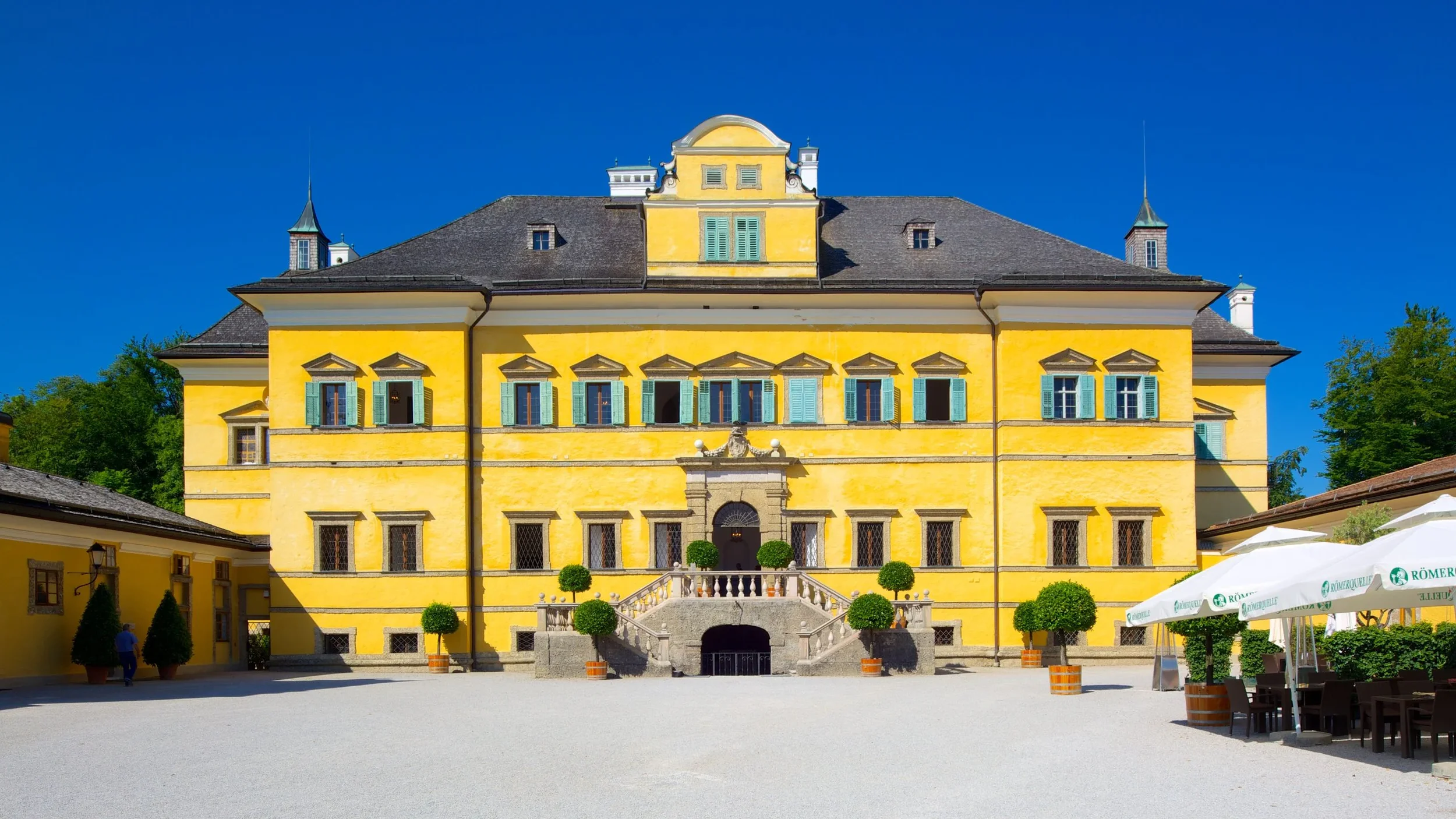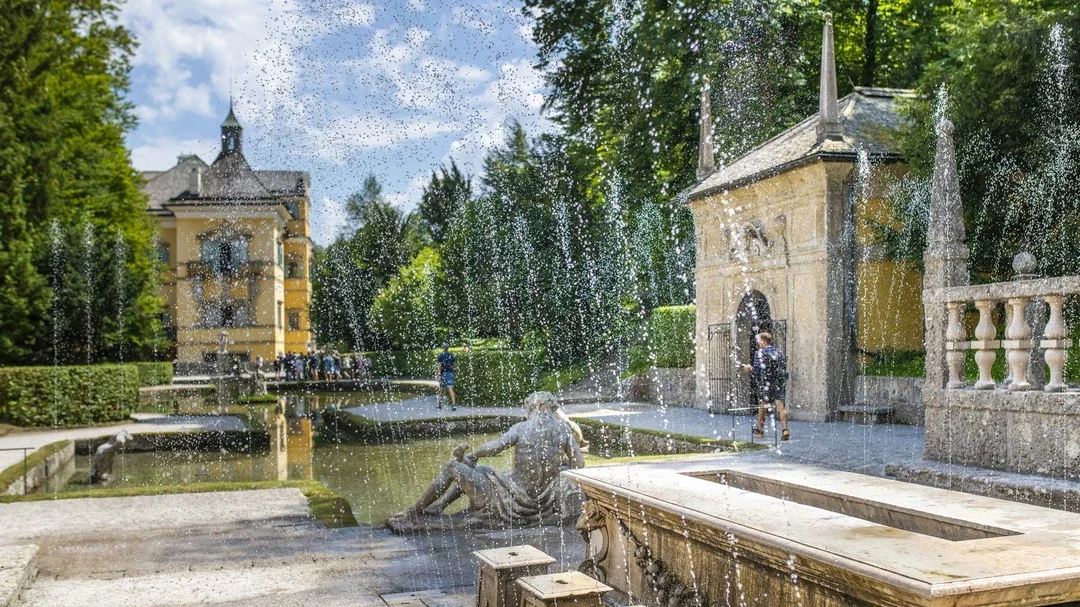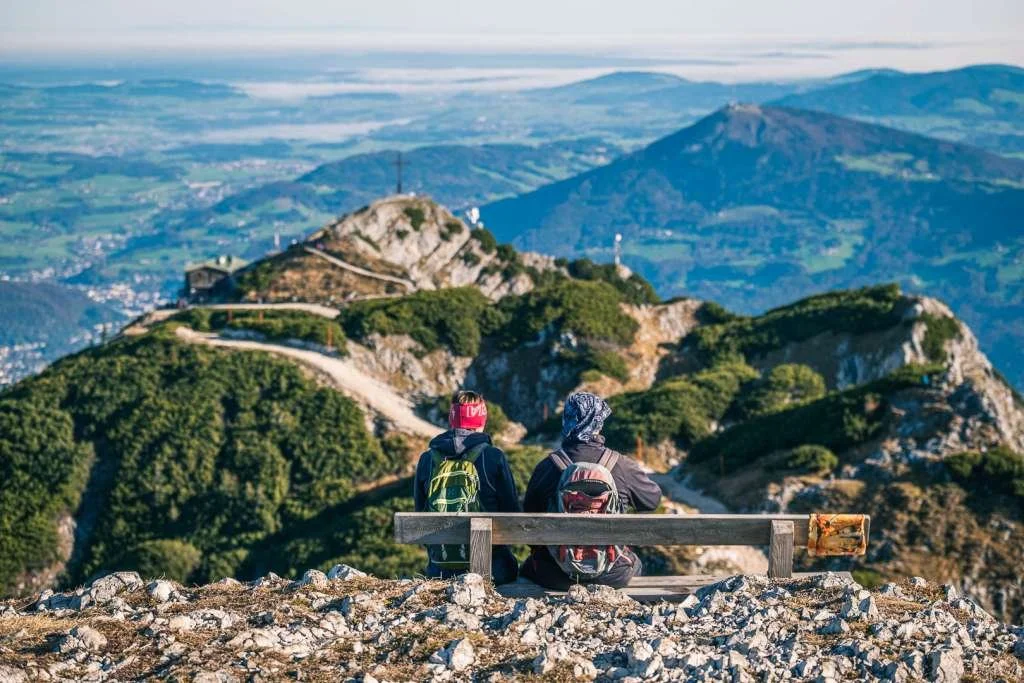Salzburg
Salzburg, Austria, is a picturesque city where culture and nature harmonize. Famous as Mozart’s birthplace, it boasts a strong musical heritage celebrated through concerts and the renowned Salzburg Festival. Its UNESCO-listed old town features baroque architecture, charming squares, and winding cobbled streets, all watched over by the mighty Hohensalzburg Fortress. The Salzach River flows gracefully through the city, with the Alps providing a dramatic backdrop. Visitors can stroll through Mirabell Gardens, enjoy traditional cafés, or explore filming sites from The Sound of Music. Salzburg’s blend of history, music, and alpine beauty makes it an unforgettable and enchanting destination.
1.Getreidegasse & Mozarts Birthhouse
The Getreidegasse is Salzburg’s most famous shopping street, a charming narrow lane lined with elegant townhouses, wrought-iron guild signs, boutiques, and cafés. Strolling through this lively street in the Old Town is a must, whether you’re browsing international brands, Austrian shops, or simply soaking up the historic atmosphere. Hidden passageways connect the Getreidegasse with quiet courtyards and side streets, offering a glimpse into Salzburg’s past.
At No. 9 Getreidegasse you’ll find Mozart’s Birthplace (Mozarts Geburtshaus), where Wolfgang Amadeus Mozart was born in 1756. Today, the house is a museum dedicated to the composer’s early life and work. Visitors can see historical instruments, portraits, family letters, and even the rooms where the Mozart family lived.
Tickets & hours: Mozart’s Birthplace is open daily, usually from 9:00–17:30 (longer hours in summer). Tickets cost about €12 for adults, with concessions available.
Together, the Getreidegasse and Mozart’s Birthplace combine Salzburg’s charm with its most famous cultural heritage.
Towering high above Salzburg’s Old Town, the Hohensalzburg Fortress is one of Europe’s largest and best-preserved medieval castles. Built in the 11th century and expanded over the centuries, it offers a fascinating journey through Salzburg’s history along with some of the best panoramic views of the city and surrounding Alps.
Highlights: Inside, visitors can explore the State Rooms with ornate gothic decoration, the Fortress Museum, and the Marionette Museum. The medieval towers and walls provide sweeping vistas, making the fortress especially atmospheric at sunset. Concerts are also held regularly in the historic halls.
Tickets & hours: The fortress is open daily, usually from 9:30–17:00 in winter and 8:30–20:00 in summer. Tickets cost around €13–16 for adults, including museums and the funicular ride.
Tips: The fortress can be reached either by a short walk uphill or via the funicular railway from Festungsgasse. Plan at least 2–3 hours for your visit.
2.Fortress Hohenslazburg
3.Augustiner Brau
For a true taste of Salzburg tradition, head to the Augustiner Bräu at Kloster Mülln, Austria’s largest beer hall and garden. Founded by monks in 1621, it remains one of the city’s most atmospheric spots to enjoy a drink and local specialties.
Highlights: Beer is still brewed on-site following centuries-old recipes and served in hefty stone mugs. Guests select their stein, rinse it at the fountain, and then have it filled fresh from the barrel. Alongside the beer halls, the vast beer garden under chestnut trees is a favorite gathering place, especially in summer. Food is not served at the tables – instead, visitors choose from a wide range of stalls offering pretzels, roast chicken, sausages, and other Austrian classics.
Hours & tips: Open daily from late morning until late evening (typically 15:00–23:00 weekdays, from 14:30 on weekends). It’s self-service and very informal, so come hungry, thirsty, and ready to share long wooden tables with locals.
Augustiner Bräu is more than a brewery – it’s a Salzburg institution and an essential stop for beer lovers.
For fans of the classic film, Salzburg offers the chance to step straight into the world of The Sound of Music. Several companies run Sound of Music Tours, taking visitors to filming locations around the city and nearby countryside.
Highlights: In Salzburg you’ll see sites like the Mirabell Gardens, where the “Do-Re-Mi” scene was filmed, the Leopoldskron Palace (the Von Trapp family home), and Nonnberg Abbey. Outside the city, tours often include the gazebo at Hellbrunn Palace and scenic stops in the Salzkammergut Lake District, such as Mondsee, where the wedding church is located.
Tickets & hours: Tours usually last about 4 hours and cost around €50–60 per adult. Morning and afternoon departures are common, with pick-up from central Salzburg. Private tours are also available.
Tips: Even if you’re not a huge fan of the movie, the tours are a fun way to see Salzburg’s landmarks and beautiful landscapes. Singing along is encouraged but not required!
4.Sound of Music - Tour
5.Mirabell Palace
Built in 1606 by Prince-Archbishop Wolf Dietrich, Mirabell Palace is one of Salzburg’s most elegant landmarks. While the palace itself houses city offices today, the ornate Marble Hall is still used for concerts and weddings, renowned as one of the most beautiful wedding halls in Europe.
The real highlight, however, is the Mirabell Gardens, laid out in the baroque style with symmetrical flowerbeds, statues, and fountains. From here, you can enjoy a picture-perfect view of the gardens leading up to the fortress above the Old Town. Fans of The Sound of Music will recognize the gardens as the backdrop for the famous “Do-Re-Mi” scene.
Tickets & hours: Entrance to the gardens is free and they are open daily from morning until dusk. The Marble Hall can be visited during scheduled concerts.
Tips: Come early in the morning or late afternoon for fewer crowds and the best light for photos.
6.Hangar 7
For something modern and unexpected in Salzburg, visit Hangar-7, a striking glass-and-steel building at Salzburg Airport that belongs to Red Bull founder Dietrich Mateschitz. It’s part museum, part event space, and part culinary hotspot.
Highlights: The exhibition space showcases the Flying Bulls historic aircraft collection – from vintage planes to helicopters – alongside Formula 1 race cars and other high-tech vehicles. The building itself, with its futuristic design and sweeping glass dome, is worth the visit alone. Hangar-7 also hosts changing art exhibitions and cultural events.
Food & drink: The on-site Restaurant Ikarus is world-renowned for its rotating concept: each month a different top international chef takes over the kitchen. For something more casual, there are also bars and cafés inside.
Tickets & hours: Entry is free. Hangar-7 is open daily, usually from 9:00 until late evening (bars and restaurant have separate hours).
Hangar-7 combines aviation, art, and design in a way that makes it one of Salzburg’s most unique attractions.
7.Obersalzberg and Eagles Nest
Just across the border in Germany, about 30 minutes from Salzburg, lies Obersalzberg and the famous Eagle’s Nest (Kehlsteinhaus). Built in 1938 as a mountaintop retreat during the Nazi regime, the Eagle’s Nest now serves as a historical site and restaurant, offering visitors both a lesson in history and breathtaking Alpine views.
Highlights: A special bus and elevator bring visitors up to the summit at 1,834 meters, where the building perches dramatically above Berchtesgaden. On clear days, the panorama stretches across the Alps into Austria. Nearby, the Dokumentation Obersalzberg museum provides detailed insight into the area’s World War II history and the Nazi period.
Tickets & hours: Seasonal access, typically mid-May to late October. Eagle’s Nest bus tickets cost around €30 per adult, including the elevator. The documentation center is open most of the year with separate admission (~€4–5).
Tips: Bring warm clothing even in summer – weather at the summit can be cool and change quickly.
A short ride from Salzburg’s Old Town, Hellbrunn Palace (Schloss Hellbrunn) is a playful baroque masterpiece built in the early 1600s by Prince-Archbishop Markus Sittikus. Designed as a summer retreat, it’s best known for its trick fountains (Wasserspiele), which still surprise and entertain visitors today.
Highlights: The palace itself features grand halls, frescoes, and exhibitions about Salzburg’s rulers, but the gardens and fountains are the real draw. Hidden water jets, moving figures, and ingenious designs turn a stroll into an interactive experience – prepare to get a little wet! The grounds also include beautiful parks, a stone theater, and the Sound of Music gazebo, moved here from its original location for fans of the film.
Tickets & hours: Open daily from April to early November, 9:00–17:30 (longer in summer). Admission is about €14.50 for adults, including a guided fountain tour.
Tips: Best enjoyed on warm days – and don’t forget your sense of humor!
8. Castle Hellbronn
9. Untersberg
Just 10 km south of Salzburg rises the Untersberg, a dramatic limestone massif on the edge of the Alps. Easily reached by bus or car, it’s a favorite local escape for hiking, panoramic views, and fresh mountain air.
Highlights: The Untersberg Cable Car (Untersbergbahn) whisks visitors up to 1,776 meters in just a few minutes. At the top, walking trails lead to breathtaking viewpoints over Salzburg, the Berchtesgaden Alps, and even as far as the Dachstein on a clear day. In winter, the area is popular for skiing and snowshoeing. The mountain is also steeped in legends – local folklore tells of Emperor Charlemagne sleeping inside until his return.
Tickets & hours: The cable car runs daily, roughly 8:30–17:00 (seasonal variations). A return ticket costs about €28 for adults.
Tips: Bring sturdy shoes and warm clothing – even in summer, it can be chilly at the summit. Allow 2–3 hours for the trip.
Just east of Salzburg lies the Salzkammergut, a stunning lake district of crystal-clear waters, rolling hills, and alpine peaks. It’s one of Austria’s most beloved regions for day trips, perfect for swimming, boating, or simply relaxing by the water.
Mondsee: Only 30 minutes from Salzburg, Mondsee is famous for its beautiful church, which appeared as the wedding location in The Sound of Music. The lake’s warm waters make it ideal for summer swimming.
Wolfgangsee: A postcard-perfect lake surrounded by charming villages such as St. Wolfgang and St. Gilgen. The Schafberg Railway cogwheel train offers panoramic views over the lake region from the mountaintop.
Attersee: Austria’s largest inland lake, popular for sailing, diving, and its turquoise waters. Composer Gustav Mahler spent summers here, inspired by the scenery.
Other highlights: The smaller lakes – Fuschlsee, Traunsee, and Hallstätter See – each have their own character and are easily reached from Salzburg.
Tips: Regional buses and boats connect many of the lakes, but renting a car gives the most flexibility. In summer, bring swimwear – in winter, enjoy crisp air, snowy peaks, and cozy lakeside villages.
The Salzkammergut offers some of Austria’s most enchanting landscapes, just an hour from Salzburg.
















